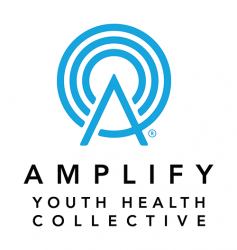Training
Engaging Commercially Sexually Exploited Youth in Conversations About Sexual Health
My Life My Choice (MLMC) and Planned Parenthood League of Massachusetts (PPLM) have merged their respective expertise in commercial sexual exploitation of children (CSEC) and sexuality education to create an evidence, trauma, and survivor-informed training designed to help a wide range of youth service providers use intentional and inclusive language to begin conversations with young people about sex and sexuality that reflects the realities of their lives. Application link here.
Online
Age Group(s) - Grades 6-8, Grades 9-10, Grades 11-12
Topic(s) - Consent and interpersonal and sexual violence, Contraception, pregnancy, and reproduction, Creating an inclusive and affirming learning environment, Disclosure, Effective teaching strategies, HIV and other sexually transmitted diseases/infections, Responding to challenging questions, Values
State(s) - Alabama, Alaska, Arizona, Arkansas, California, Colorado, Connecticut, Delaware, Florida, Georgia, Hawaii, Idaho, Illinois, Indiana, Iowa, Kansas, Kentucky, Louisiana, Maine, Maryland, Massachusetts, Michigan, Minnesota, Mississippi, Missouri, Montana, Nebraska, Nevada, New Hampshire, New Jersey, New Mexico, New York, North Carolina, North Dakota, Ohio, Oklahoma, Oregon, Pennsylvania, Rhode Island, South Carolina, South Dakota, Tennessee, Texas, Utah, Vermont, Virginia, Washington, West Virginia, Wisconsin, Wyoming
Professional Learning Standards for Sex Education (PLSSE) Indicators
Consent, Interpersonal and Sexual Violence Indicators - Indicator 1 (K-12): Define consent.
- Indicator 2 (K-12): Explain why consent is a fundamental right for people of all ages.
- Indicator 3 (K-12): Differentiate between situations in which sexual consent is and is not present.
- Indicator 4 (K-12): Identify three youth-friendly resources to assist survivors of sexual assault, abuse, incest, or domestic violence.
- Indicator 5 (K-12): Explain sex trafficking and the state laws related to it.
- Indicator 6 (K-12): Explain bodily autonomy and how it relates to consent and sexual abuse prevention.
- Indicator 7 (K-12): Explain the impact of childhood trauma on the decision-making and sexual health of students.
Contraception, Pregnancy, and Reproduction Indicators - Indicator 3 (6-12): Describe the differences in mechanisms of action and access between emergency contraception and the abortion pill.
Creating and inclusive and affirming learning environment Indicators - Indicator 1 (K-12): Demonstrate three techniques to create an inclusive and affirming learning environment. (S)
- Indicator 3 (K-12): Describe three elements of a trauma-informed approach to sex education.
- Indicator 4 (K-12): Demonstrate three strategies of a trauma-informed approach to sex education (e.g. giving trigger warnings before content on sexual assault and allowing students the right to pass as appropriate, etc.). (S)
Disclosure Indicators - Indicator 4 (K-12): Explain the roles and responsibilities of a mandated reporter.
- Indicator 5 (K-12): Explain the state- and district-mandated reporting requirements and procedures.
Effective Teaching Strategies Indicators - Indicator 1 (K-12): Demonstrate the ability to build rapport with students. (S)
- Indicator 2 (K-12): Demonstrate three student-centered instructional approaches that support a variety of learning styles. (S)
- Indicator 3 (K-12): Explain the differences between positive vs. shaming approaches to teaching sex education.
HIV and other sexually transmitted diseases/infections Indicators - Indicator 1 (6-12): Describe HIV and three common STDs/STIs, and how each can and cannot be transmitted.
- Indicator 2 (6-12): Explain that many STD/STIs do not cause symptoms and the only way to know if you have one is to be tested.
- Indicator 3 (6-12): Explain the benefits of getting tested and treated for HIV and other STDs/STIs.
- Indicator 4 (6-12): Explain three facilitators and three barriers to STD/STI testing and treatment.
- Indicator 7 (6-12): Identify three medically accurate and youth-friendly resources for STD/STI and HIV prevention, testing, and treatment
Responding to Challenging Questions Indicators - Indicator 1 (K-12): Explain three reasons why it is important to respond to every question students ask when teaching sex education.
- Indicator 2 (K-12): Demonstrate the ability to effectively respond to three different types of challenging questions. (S)
Values Indicators - Indicator 1 (K-12): Explain the differences between personal and universal values relating to sexuality.
- Indicator 2 (K-12): Describe how verbal and nonverbal expression of personal values, and comfort with topics related to sex education, could impact one’s teaching
- Indicator 3 (K-12): Explain the importance of educators refraining from sharing their personal values when implementing sex education.
- Indicator 4 (K-12): Demonstrate the ability to respond effectively to students’ values-based comments and questions. (S)



